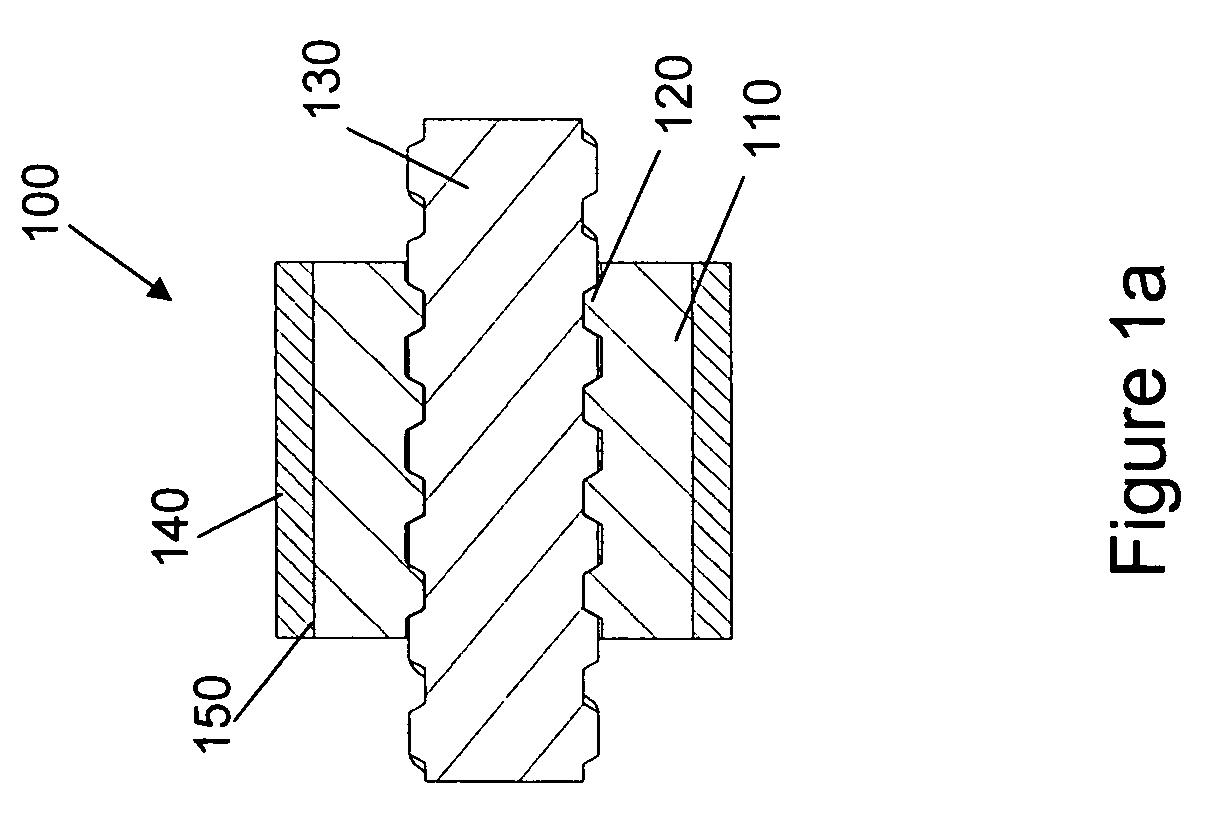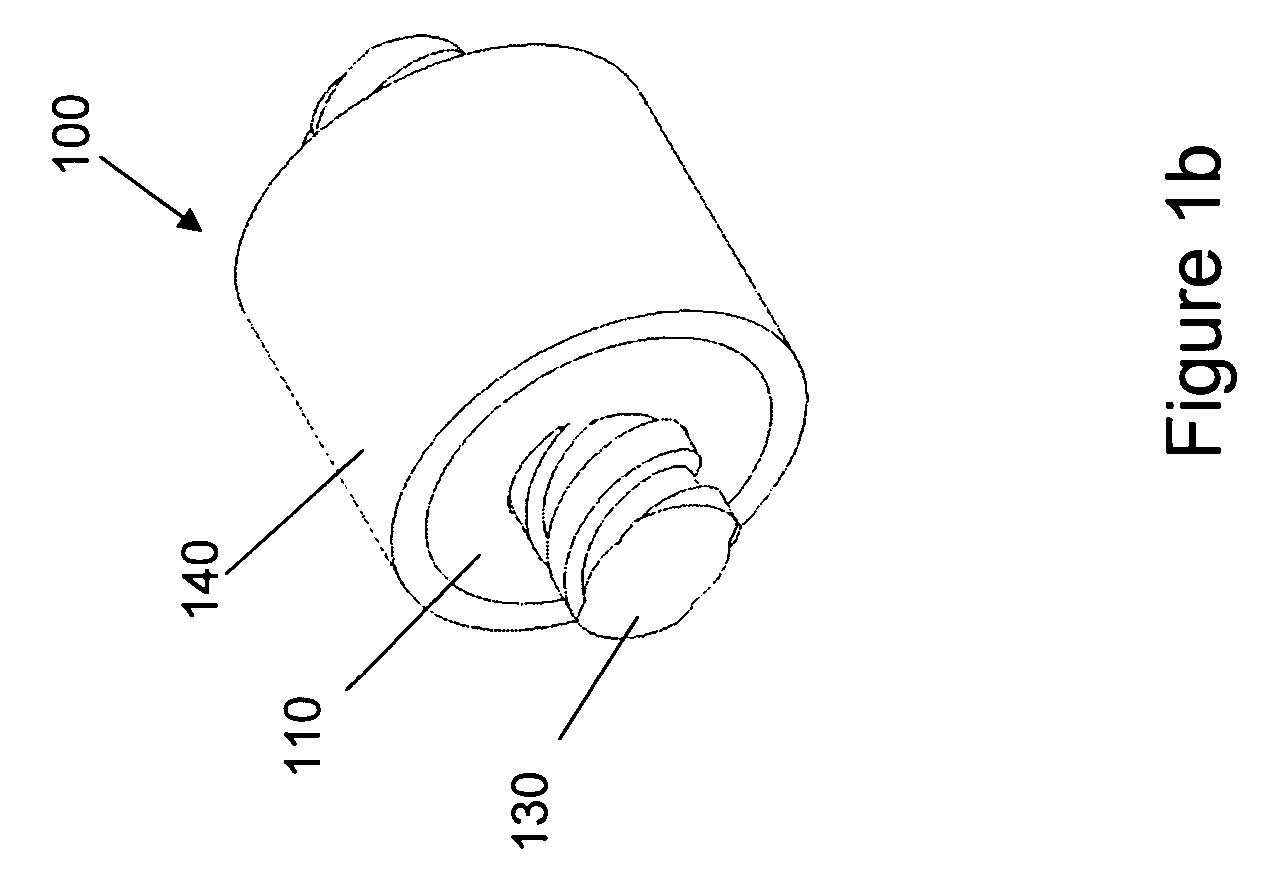Damping nut for screw-driven mechanism
- Summary
- Abstract
- Description
- Claims
- Application Information
AI Technical Summary
Benefits of technology
Problems solved by technology
Method used
Image
Examples
first embodiment
[0027]FIGS. 1a and 1b illustrate a first embodiment the vibration-damping nut, which comprises a nut body 110 with internal threads 120 engaged with the threads of a lead screw 130. A damping element, which may be a passive-damping element 140, is in contact with the nut body 110 at its outer surface 150. In a preferred embodiment, the damping element is a viscoelastic material (VEM) that transfers vibration-energy into thermal heat. In such embodiment, strain energy is transferred to the VEM through the surface 150 of the nut body 110. An adhesive can be used to attach the damping element 140 to the nut body surface 150, and a recess may alternatively or additionally be formed in the nut body 110 to hold the damping element.
[0028] In this and in other embodiments, the damping element is linked to a surface of the nut, which linking can be accomplished in a variety of manners, including friction fitting, by an adhesive, or other means. Contact between the damping element and the nut...
second embodiment
[0032]FIG. 2 illustrates a nut having a ring-shaped damping element 270 positioned such that it is in contact with the nut 260 at a radial surface 280, which is radial relative to a central axis of the nut body. This axis, of course, is essentially collinear with a central axis of the lead screw 130. In this specific embodiment, the radial surface 280 is at the end of the nut body 260, but need not be, but depends on the specific embodiment.
third embodiment
[0033]FIGS. 3a and 3b illustrate the present invention. In this, as well as in other selected embodiments, a mass 311 is in contact with a damping element 310. In this embodiment, the mass 311 is substantially tubular with a substantially circular cross section, though other cross-sections are very much possible in this and in other embodiments.
[0034] The mass 311 acts as a constraining layer to assist in creating strain in the damping element 310. This is accomplished because the mass 311 helps distribute loads evenly to the damping element 310, due to its rigidity. The mass 311 also acts as a tuning mass to assist in damping vibration. The magnitude of the mass (weight) of mass 311 is pre-selected for a desired behavior under anticipated loading conditions of the nut 300. By pre-selecting the mass (weight) of the mass 311, the natural frequencies (rotational and linear) can be adjusted, as can the natural frequencies of the entire system attached thereto. As such, undesired resona...
PUM
 Login to View More
Login to View More Abstract
Description
Claims
Application Information
 Login to View More
Login to View More - R&D
- Intellectual Property
- Life Sciences
- Materials
- Tech Scout
- Unparalleled Data Quality
- Higher Quality Content
- 60% Fewer Hallucinations
Browse by: Latest US Patents, China's latest patents, Technical Efficacy Thesaurus, Application Domain, Technology Topic, Popular Technical Reports.
© 2025 PatSnap. All rights reserved.Legal|Privacy policy|Modern Slavery Act Transparency Statement|Sitemap|About US| Contact US: help@patsnap.com



